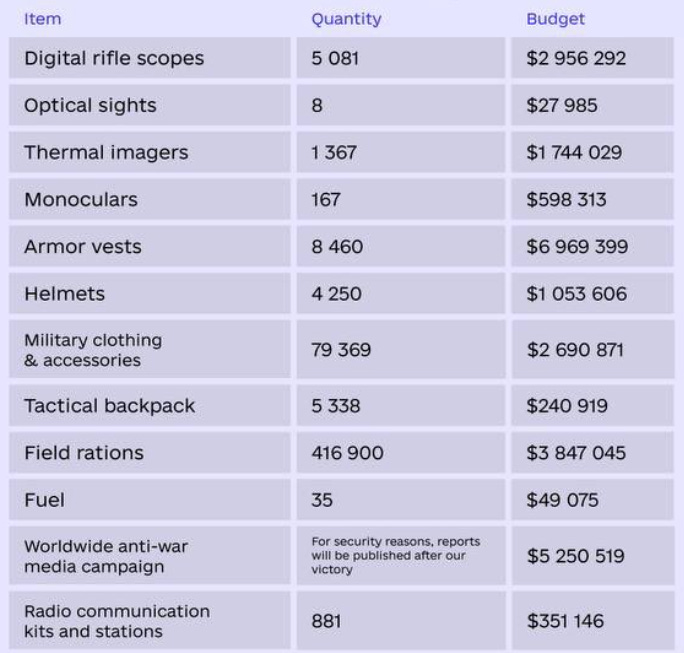SOMEONE’S KNOCKING ON THE DOOR.
Financial investigators are on the move, Ukraine makes practical use of crypto donations, worthless spam NFTs about to get toasted.
Ready or not, here comes the Crypto Owl. Our radar keeps on scanning the crypto territory 24/7, and today we’re presenting you our yesterday’s finds. Let’s do this.
On Today’s Menu:
🍿 BREAKFAST POPCORN: Another stablecoin loses its peg
🍽 BLOCK OF LASAGNE: Solana vs spam NFTs
🥗 GREEK SALAD: KuCoin and other 15 exchanges in South Korean trouble
🍸 APEROL SPRITZ: Ukraine knows what to do with crypto donations
🍮 TIRAMISU: Top crypto news
HUSD STABLECOIN IS NOT SO STABLE
Okay, now this looks unsettling. HUSD, a stablecoin, has just lost its dollar peg. At the moment of writing, 1 HUSD sells for $0.87, instead of $1. Now, where have we seen this before… Well, it’s only the beginning, but it definitely doesn’t promise anything good.
HUSD has a 24-hour trading volume of $42,599,378 USD and a market cap of $140,239,245 USD. And as of today, this stablecoin has a circulating supply of 160,663,906 HUSD. So, these are big numbers. And when a stablecoin of such size loses its peg… A bloodbath awaits. Well, it hasn’t happened yet, but the signs are more than anxiety-inducing.
What’s the big deal? Well, this ain’t no regular coin. First of all, this coin has a relation with Huobi - the world’s #9 cryptocurrency exchange. As it was reported, Huobi has been backing this project till April 2022, after that they abandoned it. So, questions arise. And… troubles like this may cause more collateral damage, despite Huobi having distanced itself from it. How can we tell?
Here’s how the Huobi token, a token issued by the exchange itself, is performing at the moment of this sentence being written: its price is down 7.57% during the last 24 hours. And this is happening before the panic has truly spread.
Because people might begin getting suspicious. Why did Huobi abandon the HUSD? What’s happening with HUSD? Does Huobi have something to hide? In moments like this, panic takes over the wheel. And if one of the world's top 10 crypto exchange platforms would face real troubles… That would be… really bad news.
The situation is only unfolding. We’re observing it closely. Stay tuned!
SOLANA TO STEAMROLL NFT SPAM
Solana-based Phantom Wallet announces a new and fiery-sounding feature called ‘Burn NFTs’. Its purpose? To protect users from the tsunami of spam NFTs that scammers are relentlessly sending out to regular people.
According to the developers, from now on, users will be able to access this feature through the Burn Token tab in the Phantom wallet app. It’s user-friendly and easy to understand: users only have to select the spam NFT they want to burn and simply press a button. As Phantom’s team describes: “spam NFTs clutter wallets, [but] they are never dangerous to burn.”
Solana’s ecosystem is riddled with scammers and their dirty techniques. In an official statement by Phantom, they described the evolution of such scams:
“For instance, after a contract address and domain is identified as malicious, scammers can change the metadata of an NFT to try to avoid being blocklisted. It can feel like an endless game of whack-a-mole, but one we’re committed to winning.”
Well, step by step, Web3 is growing and maturing. Even though they’re more scammers than there are fish in the sea, the collective minds of the best developers out there are doing their best to get them.
SOUTH KOREAN FINANCIAL REGULATORS HAVE BEGUN TO BITE
KuCoin, together with 15 other international crypto exchanges (such as Phemex, XT.com, Bitrue, ZB.com, Bitglobal, CoinW, or MEXC), woke up to someone knocking at their door. South Korea’s financial regulators are running out of patience because, apparently, these crypto exchanges have failed to comply with local guidelines and, as the allegations go, to stop courting domestic clients without official operating permits. What does that mean?
As it’s reported, all these crypto exchanges have one thing in common - they were all allegedly actively targeting South Koreans as their potential customers. They’ve been warned before and were asked to cease such activities. Because dealing with South Koreans, technically meant that these exchanges were operating in South Korea, despite not being based there.
Among the requirements that were issued for anyone who had such intentions was, for example, the demand that these exchanges had to obtain information management certifications from government-related agencies.
That sounds like a lot of bureaucracy. Quite naturally, these exchanges avoided all the hassle. But did not cease their activities.
So what’s the aftermath? The Korea Communications Commission and the Korea Communications Standards Commission, a governmental body whose role could be described as internet and media censors (we’re talking about South Korea, but this defo sounds pretty like North Korea's), has been instructed to block all access to those 16 companies within the country.
And in addition to that, those who will be found guilty of participating in an unreported act of trading of crypto assets could even be facing jail time up to 5 years and receive a fine that can go as high as $38,000. So… yeah… Aspirin won’t fix this headache.
CRYPTO PLAYS AN IMPORTANT ROLE IN UKRAINE
On Thursday, Ukraine’s Deputy Prime Minister Mykhailo Fedorov tweeted out a heartfelt message:
“With $54 M raised by @_AidForUkraine we've supplied our defenders with military equipment, armor clothes, medicines and even vehicles. Thanks to the crypto community for support since the start of the full-scale invasion! Donation by donation to the big victory.”
In essence, the international crypto community has united (and united their funds), which has resulted in $54 million worth of assets being sent to Ukraine, which, as the tweet above and the table below show, have been put to good use.
The money has been collected through Aid For Ukraine, a Ukraine-government-led initiative that’s responsible for facilitating the process of people getting involved in showing support for Ukraine.
In what shape and form did the support arrive?
According to reports by the Ministry of Digital Transformation of Ukraine, the impressive sum of $54 million consisted of:
10,190 Ether (approximately worth $18.7 million)
595 Bitcoin (approximately worth $13.9 million)
$10.4 million worth of Tether
$2.2 million worth of USDC
The money has been put to practical use. For example, almost $7 million were spent on armor vests, over $5 million on anti-war media campaigns, or, most notably, almost $12 million on UAVs - unmanned aerial vehicles. A complete list of what was acquired for these crypto funds can be found here.
Well, this goes out to those who (still) associate crypto with ‘evil deeds. As you can tell - good things happen when good people unite.
Let’s hope this will contribute to good things about which we’ll be able to hear shortly.
And as for today, these were the hottest nuggets of freshness in the crypto sphere. See you tomorrow!
MORE CRYPTO NEWS AROUND THE WEB
Canadian Pension Giant Caisse Writes Off $150M Bet on Bankrupt Crypto Lender Celsius
Optimism Token Flash Crashes 10% on False Rumors of a Major Hack
Indian Police Launch Probe Into Bitconnect Founder Wanted By Us Sec
💜 HOW DID YOU LIKE THIS NEWSLETTER? 💜
Disclaimer: This newsletter is strictly educational. None of this information is intended to be financial advice. Always do your research and act responsibly with your profits.










